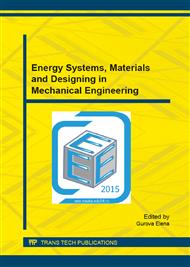p.439
p.446
p.453
p.457
p.462
p.468
p.476
p.482
p.488
Optimization of Induction Heating Regarding Typical Quality Criteria: Problem Solution Based on 2D FEM Analysis
Abstract:
One of the most widespread methods of heating is induction mass heating because it offers certain advantages over similar technologies, including convectional and electrical heating. A significant economical effect can be achieved through optimization of heating modes and design parameters of induction heaters on the basis of modern optimal control theory for distributed parameters systems. The paper is devoted to the numerical simulation and optimal with respect to typical quality criteria control of thermal modes for metals induction heating before hot forming operations. Two-dimensional non-linear time-optimal control problem, problem of maximum heating accuracy and problem of minimum energy consumption are formulated and reduced to the mathematical programming problems. Optimization procedures are based on the developed at SamSTU alternance method of optimal control theory for distributed parameters systems. 2D FLUX code provides FEM analysis of interrelated electromagnetic and temperature fields during induction heating of a cylindrical billet before its hot forming. The model integrated into optimization procedures provides options for variation of the heating system parameters or billet geometry, and for evaluating the process optimization abilities. Computational results for optimal heating of aluminum cylindrical billets are shown and analyzed.
Info:
Periodical:
Pages:
462-467
Citation:
Online since:
September 2015
Authors:
Price:
Сopyright:
© 2015 Trans Tech Publications Ltd. All Rights Reserved
Share:
Citation:


